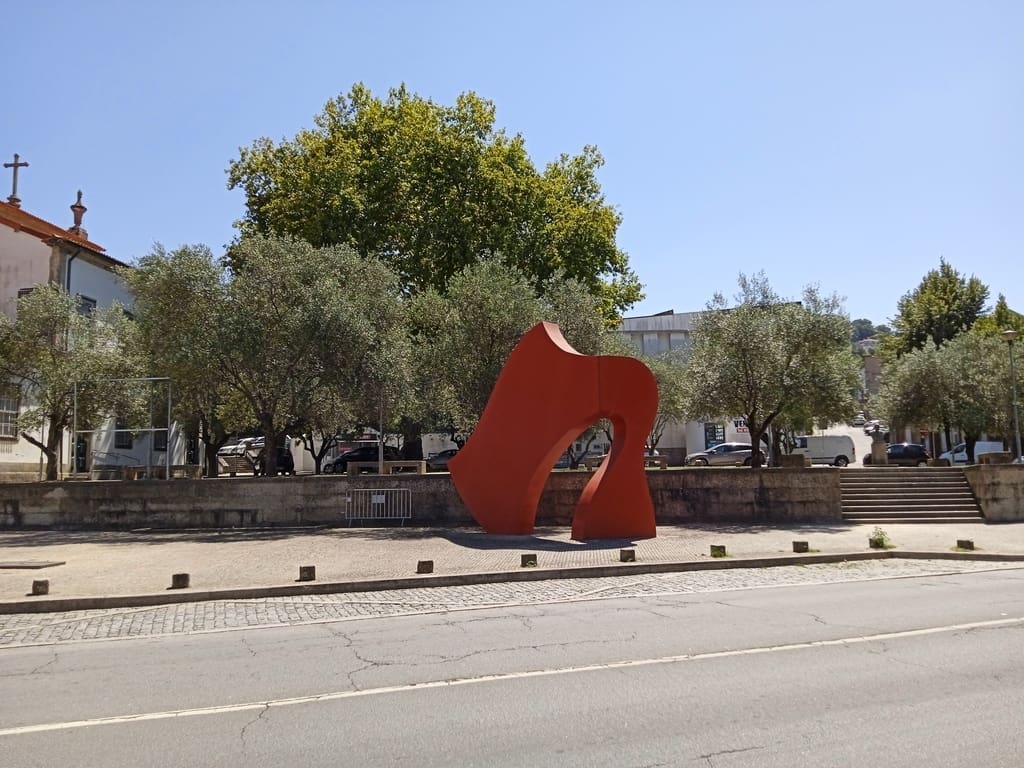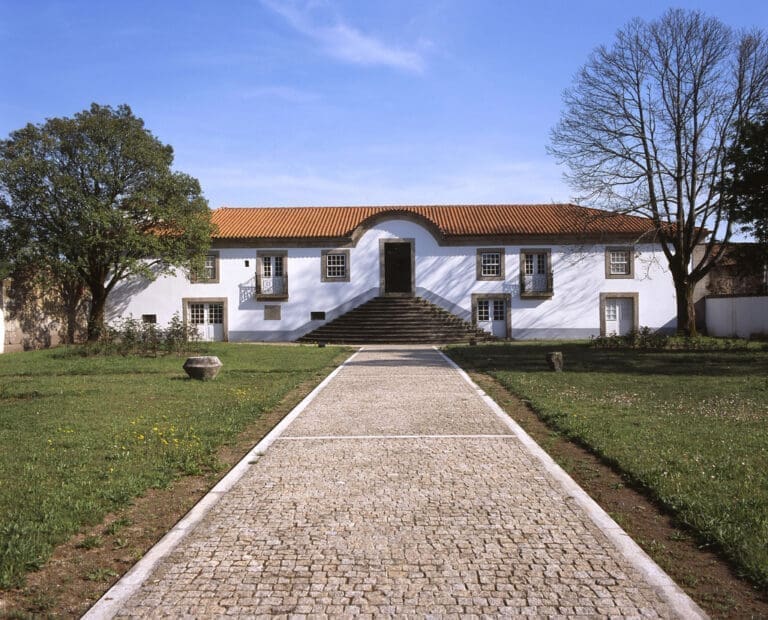The square is known to locals as “Campo da Feira”. The great market was held here every Saturday, said to be one of the most important weekly events in the kingdom, filling the square with poultry, cereals, fruit, tableware, glass, a variety of woollen, silk, linen, cotton fabrics, ironwork and livestock exhibition and sale.
In the mid-19th century, Campo da Feira became a prime location for trade. In 1854 it was decided that the Pig Fair and the Cattle Fair would be permanently located here.
The current garden has, at the top north, a fountain, which incorporates the rotunda. It is of recent construction and was inaugurated in the late 1990s.
The beautiful central garden of shrubs and flowers, which extends to the church, changes colour with the seasons, always with seasonal flowers.
At the top of the square you can see the Penha mountain. Nearby is the Cable Car, which takes us to the top of the mountain.
On the left side of the garden we see a small square with a fountain, built in 1856, with two spouts and simple decorations. Behind it is a communal public tank, made of granite. It was built to provide better conditions for the inhabitants of the surrounding area and its construction was also completed in 1856. Right next to where the Selho River flows, which passes under the garden towards the Zona de Couros. Here clothes were washed and conversations were held.
Also noteworthy are the granite statues of the apostles Saint Peter and Saint Paul, Saint James and Saint Bartholomew, all made of granite.
At the end of the square stands the Church of Nossa Senhora da Consolação and Santos Passos. The first foundation of this temple is ancient and the exact date is unknown. The original chapel was small and was demolished at the beginning of the 18th century to make way for a larger one. The main body of the church was blessed and opened for worship on 16 October 1785. The main chapel was not completed until 1798. The two towers were added later. A staircase precedes the church, lined with stone balustrades. Statues of the four evangelists decorate the front of the church.
From this church the procession of the Holy Steps takes place every day during Lent (before Easter). This church is known locally as “Igreja de S. Gualter” and is closely linked to the Major Festivals, which are celebrated annually on the first Sunday in August.
On one side of the church we see the Monument to Nicolino, a work by contemporary artist José de Guimarães, inaugurated on 25 January 2008, in honour of his pupils from Guimarães. The monument symbolises the waving of the “cape” that is part of the academic attire and served as inspiration for the artist from Guimarães and it is in this place where the Pinheiro is erected every year to mark the beginning of the Nicolina Festival.

 Guimarães, Northern Portugal
Guimarães, Northern Portugal
















